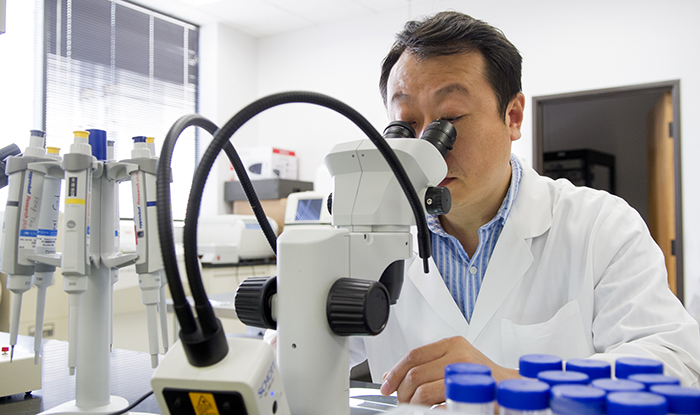More curious findings in gene study, faculty member shares during AADR symposium

By the time its National Institutes of Health grant funding period commenced last spring, one Texas A&M College of Dentistry research team already had made an unexpected discovery: the presence of supernumerary teeth in animal models devoid of FAM20B, a gene necessary for cartilage development. The extra teeth came in addition to enamel defects.
Dr. Xiaofang Wang, assistant professor in biomedical sciences and principal investigator for the $1.8 million R01 grant, shared the significance of this finding with peers from across the country during a March 24 symposium at the American Association for Dental Research/Canadian Association for Dental Research Annual Meeting in Fort Lauderdale, Florida.
Wang is confident that findings will help advance our understanding of what is happening at the molecular level with regard to extracellular control of tooth formation, but he also suggests a broader application. FAM20B appears to act as a catalyst for extracellular components known as proteoglycans, which help maintain signaling balance in tooth development. Since proteoglycans are present in nearly all tissues, this could shed light on problematic conditions in multiple body systems.
Take, for instance, limb and finger development. During the symposium, Wang shared some findings that have come to light during the course of the last year: that FAM20B-catalyzed proteoglycans control the outgrowth of limb buds and segmentation of fingers. The mechanism is even more interesting. Proteoglycans regulate the signaling hierarchy not of bone or cartilage cells themselves but of mesenchymal cells that still have the potential to differentiate into bone and cartilage.